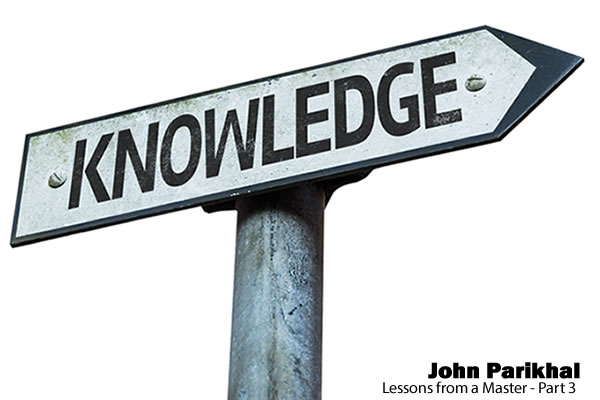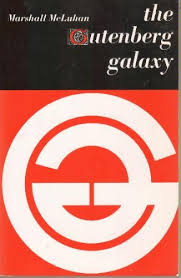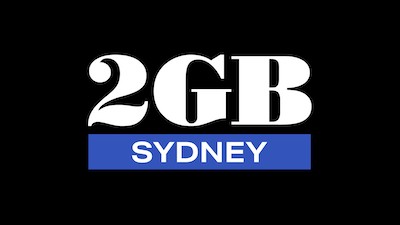John Parikhal – Lessons from a Master – Part 3

One of the most important principles I’ve learnt over the years is to surround yourself with smart people.
John Parikhal is very smart.
In Part 3 with Lessons from a Master with John Parikhal, we discuss the Product Pyramid and is it still relevant today? Greg get’s John’s perspective on the challenges and opportunities he see’s for radio in this world of social media.And how can radio today be more relevant to its listeners?
Greg: The Coleman Image Pyramid has been used by many radio stations all over the world as well as one designed by Jacobs Media (view here). You’ve created one of your own based on what you’ve learnt. Can you take us through your version?
John: I’m not sure that these pyramids are as useful as they used to be. They are re-workings of the brand pyramid which started as an advertising tool. A pyramid doesn’t seem to capture the dynamics of the modern media environment. It might make more sense and be more helpful if it was represented using that old model of the atom with radiating spokes, using the consumer as the nucleus
Having said that, my “pyramid” has more to do with the changing consumer need than with content blocks.
In a world where there is unlimited content, you can’t build a differentiated brand simply on content– even if the content is very important, such as music.
In this new world, I prefer to focus on the 3 “points” on a two-dimensional pyramid.
At the top of the pyramid is “context”. Context is about how we get “meaning” from everything around us.
For example, the NY Times contexts the news, making sense of it through their editorial filter. Facebook contexts information by filtering it through our friends’ points of view. NPR contexts events through their experts and the interviews they do on air. Consumer satisfaction is now contexted through product or event reviews and is now the #1 driver in consumer decision making. Context is king.
Another point on the pyramid is “content”. It’s everything that engages or entertains from a pure product point of view. Songs. Newscasts. TV shows. Almost everything on YouTube, etc.
The third point is “platform”. That’s where you consume. On your TV, radio, smartphone, tablet, “live”, etc.
It’s the moving interaction of these three points that reflects how to reach listeners.
GS: What kind of challenges and opportunities do you see for radio in this world of social media?
JP: Radio’s biggest challenge is to be relevant with “immediacy”. No one will wait ten minutes for the weather anymore or for a news cast or even to hear their favourite song. Social media platforms can help with this but they’ve got really stiff competition. The opportunity is to focus on the “social” life of the listener and where it intersects with your station – chances to “win” something, contest winners, local events (photo and video, please), and the “human/emotional” part of the experience you offer.

GS: With the internet turning up in cars, what will that do to local radio listening?
JP: There’s still opportunity for radio. Data costs are high in some countries (Canada, for example) so using the internet in a car can become a costly proposition. The bigger issue is that in the new car, “entertainment modules” are often hard to use, dizzying in their options, and many times not well thought out. The downside is that this could make it hard to find the radio and more convenient to simply plug in the smartphone and listen to your own music. Focus on relevant local experiences and you can still do well.
GS: How can radio today be more relevant to its listeners?
JP: Speak to listeners directly. Make them feel special. Be conscious of what’s going on at the exact time of day you are broadcasting, so that the station is always “present” rather than canned and generic. If it’s raining, weave it in. If it’s the first sunny day in a week, reflect that feeling to the listeners. When a music star dies (and it will happen more and more often), share the emotion with your listeners. And, here’s a relevance refrain from the first day I started in radio nearly 40 years ago- MAKE BETTER COMMERCIALS!
GS: What are the key things you learnt from Dave Charles that you still use today?
JP: One of the first things Dave taught me was to have an available “back up” for every presenter on the air, in case the current person leaves suddenly. And, he reminded me to update when each “back up” could start work on your station – and to do it every 3 weeks, so that you never lose a beat when a key person leaves. He taught me to seek out the best talent for every position and to nurture them. He reminded me to check my ego at the door and to share credit with others. I follow his principles to this day.
GS: Major radio companies are not the only ones that have called on your expertise. You’ve worked with companies like Pepsi, Rolling Stone Magazine, Peoples Bank, Wendy’s & Molson Coors Beer. In fact, you consulted to and researched for over 1000 companies – including media, entertainment, packaged goods, and internet/online companies – in the US, Canada, Europe, Australia and South America. How did this come about?
JP: Almost every one of those projects was generated by a personal recommendation which resulted in a call from a potential client. I think that people liked the ratings and revenue results we generated and seemed happy with the way I worked with whatever team I was assigned to. I was told that I had an original way of seeing things, which seemed to lead to some out-of-the box creativity. Sometimes I was approached after I had spoken at a conference or a group meeting. Or I got a phone call after someone read a column I had written. And, surprisingly, I was often recommended by record company reps, which I interpreted as a statement of trust and mutual respect.
GS: In 2013, you & Philippe Denichaud formed Breakthrough Management. (www.btmgmt.net) What does the partnership bring to the table & what kind of companies do you now work with?
JP: I love the work I do with Philippe. The partnership is fun. I work on sales and business strategy while constantly improving my facilitation skills. It’s a natural extension of my lifelong interest in why people behave the way they do and how to influence others. We focus heavily on sales and sales training, working on the assumption that “people hate to be sold but love to buy”. Our bag of tools is deep. Strategic Thinking. How to grow managers and how to help managers grow their people, among others
At the core of everything we do are these truths … The only thing you really control is yourself so the better you learn to manage yourself, the more effective you will be in influencing others, which helps increase the chances for you to get what you want. In a curious twist of fate, most of our clients are currently in health care, either manufacturing or on the service side (doctors, etc.). It’s a rapidly changing field where the old is being upended by the new. In a way, it’s just like radio when I got into the business. The old – AM radio, separation of singers and songwriters, power at the networks – was being upended by the new – FM, the singer songwriter, the independent labels.
GS: What are the most important research facts that you’ve picked up in the last five years?
JP: The most important facts have been: the extent of political apathy and short-term focus among Millennials; the disconnect between falling ratings for traditional TV and the high ad rates they still command; and the degree to which the “mainstream” media keeps missing the story. For example, they tout huge sales for vinyl when they are comparatively small. They focus on the new and ignore the resurgence of Classic Rock. There are so many examples. And, the most disconcerting research fact I’ve seen is that the number of people who DON’T follow news or current events has doubled in less than 5 years.
On a macro level, the focus on “big data” (digging down into your audience/customer based on what you know about them) has been at the expense of “big picture” which is research looking at where your business fits compared not only to the direct competition but to the landscape at large. There’s a lot of lost opportunity here.
GS: What surprises did 2015 bring that made you toss & turn & alternatively sleep soundly?
JP: I tossed and turned as the lunatics ran the asylum in the Republican Party, as “country music” became a bland, predictable mush, as a rash of deaths among rock heroes of my age reminded me of my mortality, and as TV news devolved into a morally and intellectually bankrupt “selfie”. I slept soundly because I made it through another year, because I got great feedback from our clients about how Breakthrough Management was helping them both professionally and personally, and because there is so much incredible creative output available out there, showcased on YouTube, blogs, Facebook, and Instagram, among others. It wouldn’t have been possible for most of these creators to get seen or heard 30 years ago.
GS: There are many career highlights. Is there a stand out moment that you really cherish?
JP: It was the reinvention of VH1 for Viacom. Working against the odds with a group of very talented people, using management tools such as Decision Filters, breaking the rules (Pop Up Videos), incorporating Shakespearean techniques in programming (Behind the Music), and enjoying the support of senior management when we pushed against the old or thought outside the box. The ratings soared and revenues went from $75 million a year to over $300 million a year in 22 months. It was an amazing ride.
 GS: What are the two most important books that have affected the way you think?
GS: What are the two most important books that have affected the way you think?
JP: There are so many, it’s hard to narrow it down to two. I was hugely influenced by McLuhan’s “Gutenberg Galaxy”. Blew my mind. Changed the way I understood media, perception, and technology.
Another was “Grow or Die: The Unifying Principle of Transformation” by the biologist George T. Ainsworth-Land. The premise is simple. If you or your business aren’t growing, you are dying. His mapping of the Growth Curve and how it predicts the sequence in which all organic life grows is extraordinary. It has been successfully applied to business and personal growth around the world with remarkable results.
It’s a tough read because there’s a lot of science. The good news: you don’t even need to read it to apply the mind-blowingly powerful principles to business or personal growth.
GS: If Donald Trump wins…where will you move to?
JP: I’ll stay here and work to change things in the next election. In spite of America’s problems, there is a vitality and imagination that I can’t find anywhere else. The fact that I live close to New York just reinforces that.
GS: What are your three smart phone favourite apps and why?
JP: They are pretty basic. Google Maps. For obvious reasons. Camera. Because photography is my hobby and the in-camera editing tools are pretty good. Facebook. Because it lets me keep up with friends. Of course, I don’t count Contacts and Calendar because they aren’t “favourites” even though they are essential.
GS: What’s one thing that would surprise many people to learn about you?
JP: Perhaps it’s that when I left high school, I hoped to make a living as a poet and couldn’t figure out how to do it. Then, in my first year at University, I read a book of poems by Leonard Cohen and said, “That’s how”. But I didn’t think I had his talent and I was afraid of what might happen if I couldn’t make a living as a writer, so I finished my degree in Economics and Business and became a lifelong Leonard Cohen fan at the same time
GS: What does John Parikhal do to relax and have fun?
JP: I hang out with friends, take a lot of photographs wherever I am, vacation in Europe or Hawaii whenever possible, read a wide variety of books, spend time with my daughter when she’s not going to Trance music festivals, and spend time at the ocean, summer or winter, in any season.
You can reach out John Parikhal on Email: [email protected]


